With its ferry port serving the UK, Santander is often seen as a gateway to elsewhere in the north of Spain. But with delicate cuisine, a delightful esplanade and absorbing museums, there are plenty of reasons to stay a while in Cantabria’s largest city.
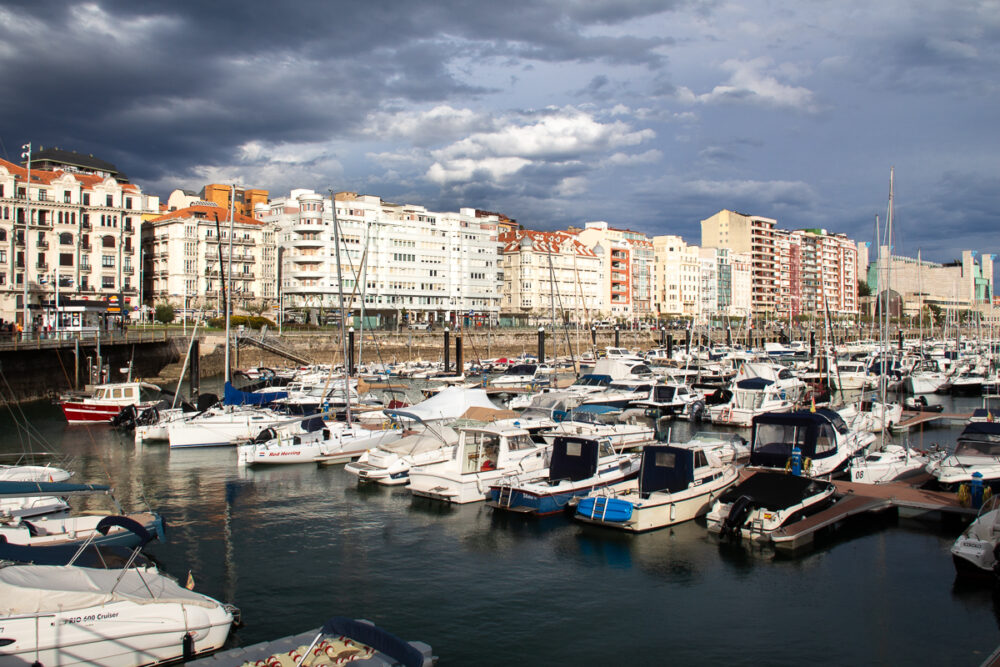
Boats moored near Santander’s Old Town (Photo: Paul Stafford)
Starting life as a humble fishing town, Santander grew into one of the main tourist resort cities along Spain’s Costa Verde (Green Coast) during the 19th and 20th centuries, thanks to it pleasant beaches framed by gentle, fertile hills. Although, to many people, the name Santander refers to a major chain of banks, the city never feels fabulously wealthy in its buildings or history. Instead, it is a modest yet pretty city with a surprising cultural depth.
Spain’s northern coastline is exposed to the wild Atlantic Ocean, bringing with it the kind of rain that makes the landscape far more verdant than the rest of the country. Often mountainous, with rugged cliffs and a fractured coastline, the Costa Verde nevertheless holds plenty of charm for all sorts of travellers. The second smallest mainland province of Spain (after La Rioja), Cantabria remains largely rural, apart from Santander, which is by far its largest urban area.
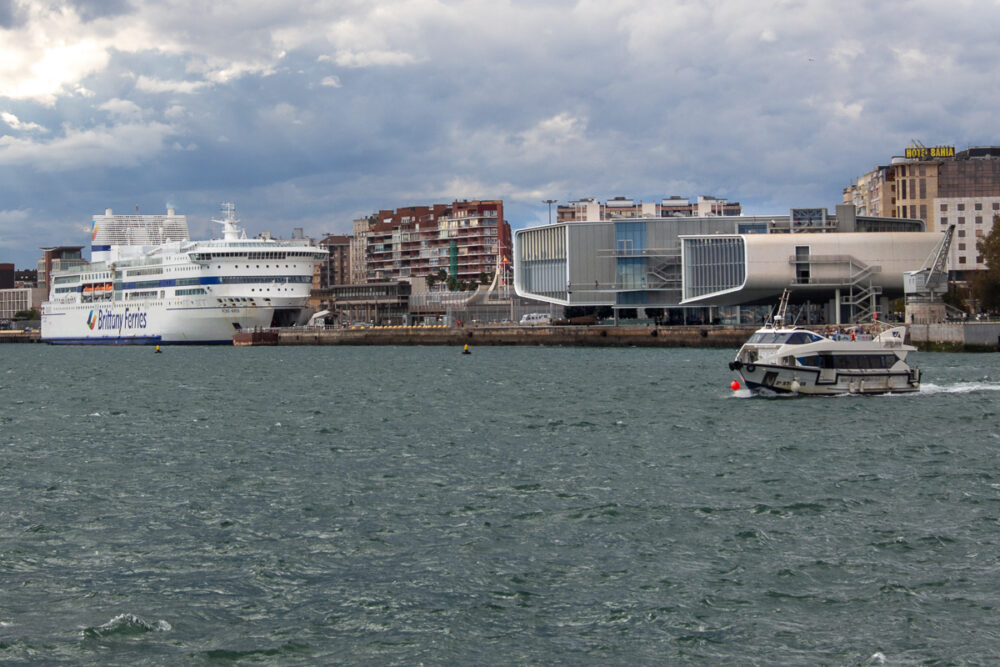
Santander’s waterfront (Photo: Paul Stafford)
This unique positioning means that ingredients from the land, such as cheeses from sheep and cows, join plenty of crops, including cauliflower, pulses, peppers, tomatoes and cabbage. When paired with fish from the rivers and seafood from a traditional fishing industry, the region concocts one of Spain’s more diverse cuisines. As the biggest city in the region, many of Cantabria’s top restaurants are located in Santander, meaning no matter how long you stay, you’re guaranteed to leave well-fed.
Things to Do
While the sun may not shine quite as much upon Cantabria as it does on the Mediterranean coastline, Santander’s beaches are stunning alternatives, particularly in the summer months. Made up of clean, ochre sand, the most elegant is El Sardinero, which is 2km long at low tide and split into two at high tide. The northern half (known as Segunda) is lined with parks. From here, follow the coastal path – Senda de Mataleñas – north to discover a series of sheltered coves, beaches and cliffs with a distinct geological imprint.
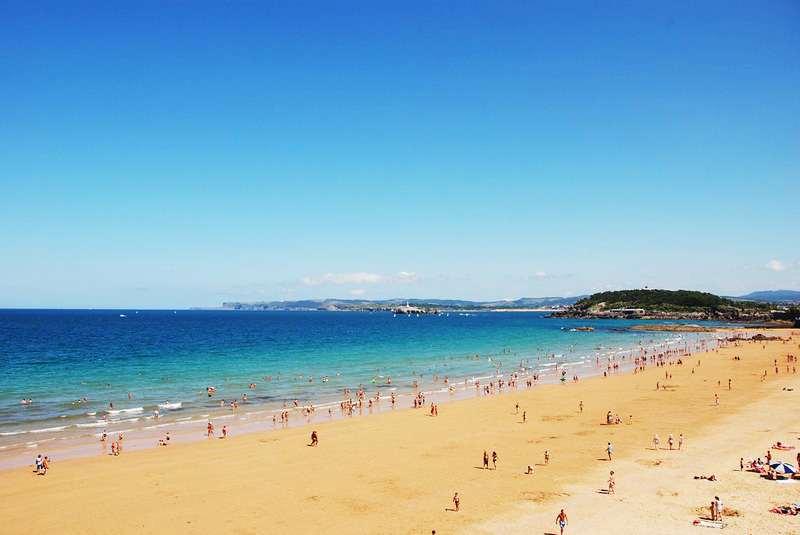
The beautiful sand beach of El Sardinero (Photo: Yellow.Cat via Flickr / CC BY 2.0)
Further south, round the Magdalena headland towards Santander’s Old Town, is Playa de los Peligros (Danger Beach) where, despite the name, the water is calmer, thanks to being sheltered from the Atlantic on the Bay of Santander. Sand flats visible from here across the bay turn into Playa de Somo, which is home to the area’s main surf school, Escuela Cantabra de Surf (C. Isla de Mouro, 12).
The Magdalena headland itself is a pleasant place for a stroll, with parkland paths leading up to Palacio de la Magdalena (Av. de la Magdalena, 1). This architecturally eclectic palace was completed as a summer residence in the early 20th century for King Alfonso XIII of Spain and his family. Guided visits are available for a fee on Sundays during the summer.
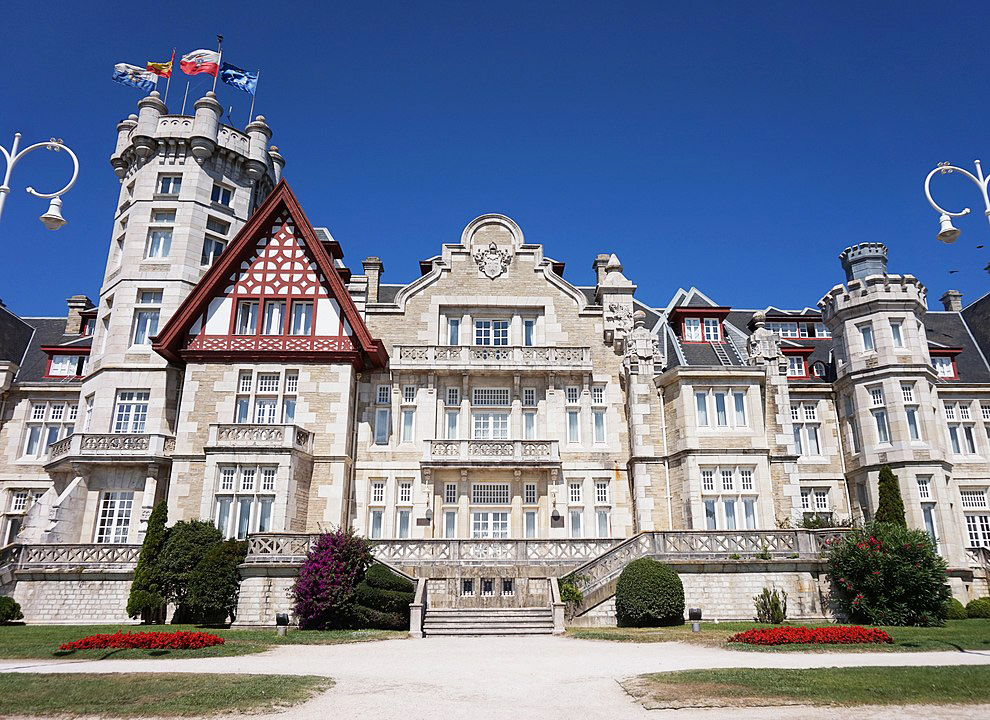
Palacio de la Magdalena (Photo: Tiia Monto via Wikimedia / CC BY-SA 3.0)
In the Old Town, the Catedral de Santander (C. Somorrostro) has one of Spain’s more unusual cathedral exteriors, sitting almost awkwardly atop a rocky outcrop, with various sections built at different times during the past 12 centuries. A dynamite explosion in the harbour badly damaged it, then a fire in 1941, which razed much of the Old Town, hit the structure again. The good restoration work is easier to appreciate within.
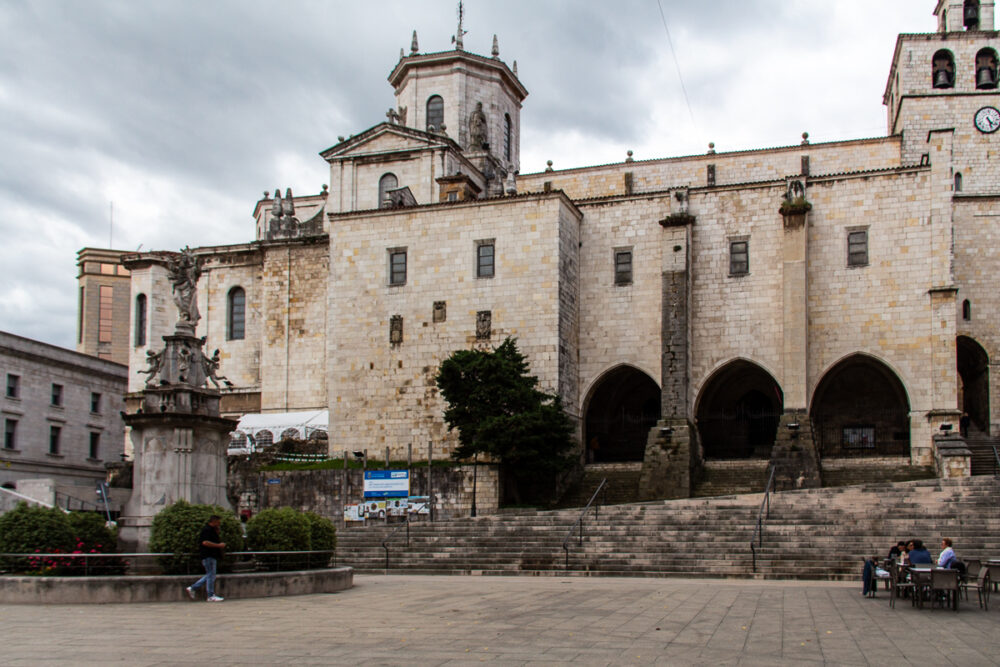
Santander Cathedral’s ungainly proportions (Photo: Paul Stafford)
Museums
The Museum of Prehistory and Archaeology of Cantabria (C. Bailén) hosts an excellent collection of artefacts. They are curated to tell the story of the peoples who inhabited the Cantabria region as far back as 20,000 years ago. You can follow the ebbs and flows of life through until the late Roman Empire. Common to most of Spain, the museum is closed on Mondays.
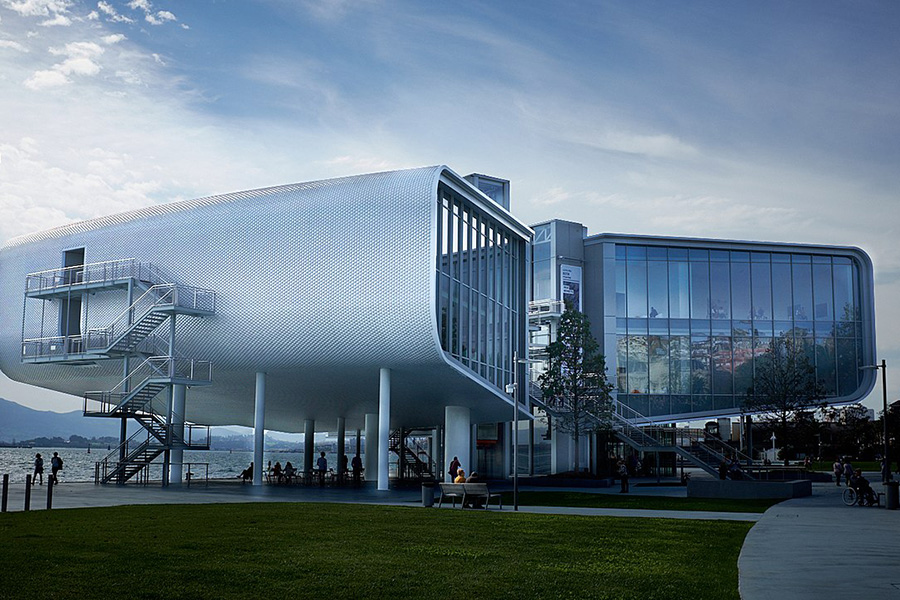
Centro Botín is a standout on Santander’s waterfront (Photo: Angel de los Rios via Wikimedia / CC BY-SA 2.0)
Centro Botín (Muelle de Albareda, P.º de Pereda) is the new(er) kid on the block. Its unique façade, designed by Renzo Piano, juts out over the bay. It, too, is closed on Mondays, apart from in July and August. Consisting of two wings raised on stilts, one half holds a gallery hosting temporary, mostly contemporary, art exhibitions.
Santander, like most major settlements along Spain’s northern coastline, has long had an existential association with the sea. To the west of Playa de los Peligros is Museo Marítimo del Cantábrico (Av. de Severiano Ballesteros), one of the region’s largest maritime museums. Walk beneath vast whale skeletons suspended from the ceiling, which allude to the region’s former association with whale hunting. There’s also an aquarium in the lower lever. Closed on Mondays.
Where to Stay
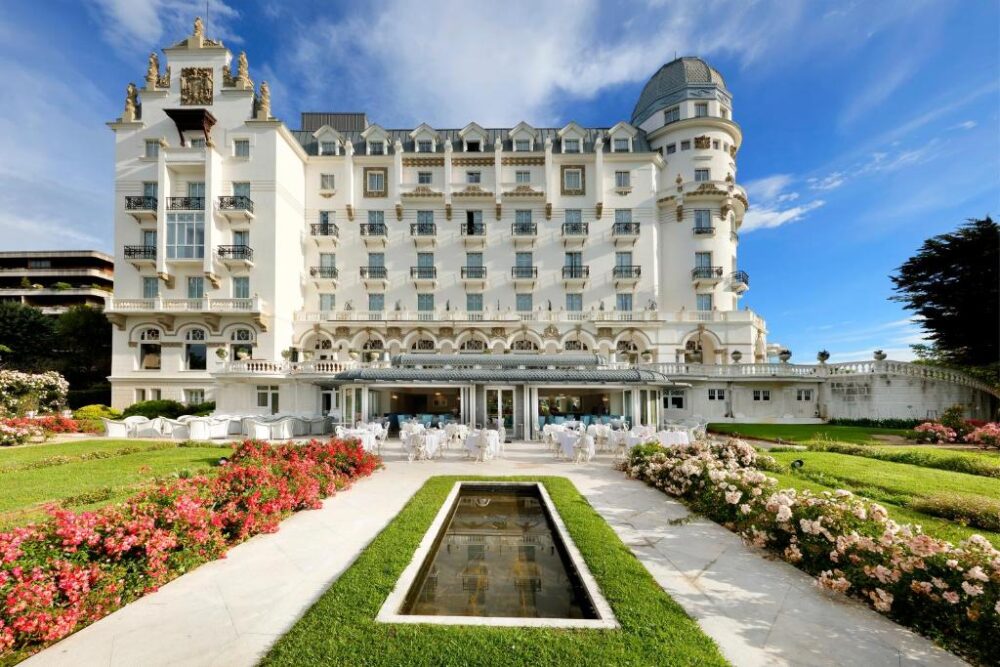
Santander’s elegant Eurostars Hotel Real (Photo: Booking.com)
In the early 20th century, when the city had regal pedigree, with the royal family coming to summer most years, Santander’s hotel scene improved with it. The belle époque-influenced Eurostars Hotel Real (Av. Pérez Galdós, 28), built in 1917, is one such product of this era. The five-star hotel has its own rose garden, which connects to the breakfast room. There’s also a panoramic terrace overlooking the bay.
Soho Boutique Palacio de Pombo (C. Marcelino Sanz de Sautuola, 2) is also big on the elegance, although this mid-range-budget choice is better for those favouring an Old Town location, right on Plaza de Pombo, surrounded by many of the city’s best bars and restaurants. Rooms are tastefully furnished, with sylvan decorative motifs behind the beds. Superior rooms include a small, sheltered balcony.
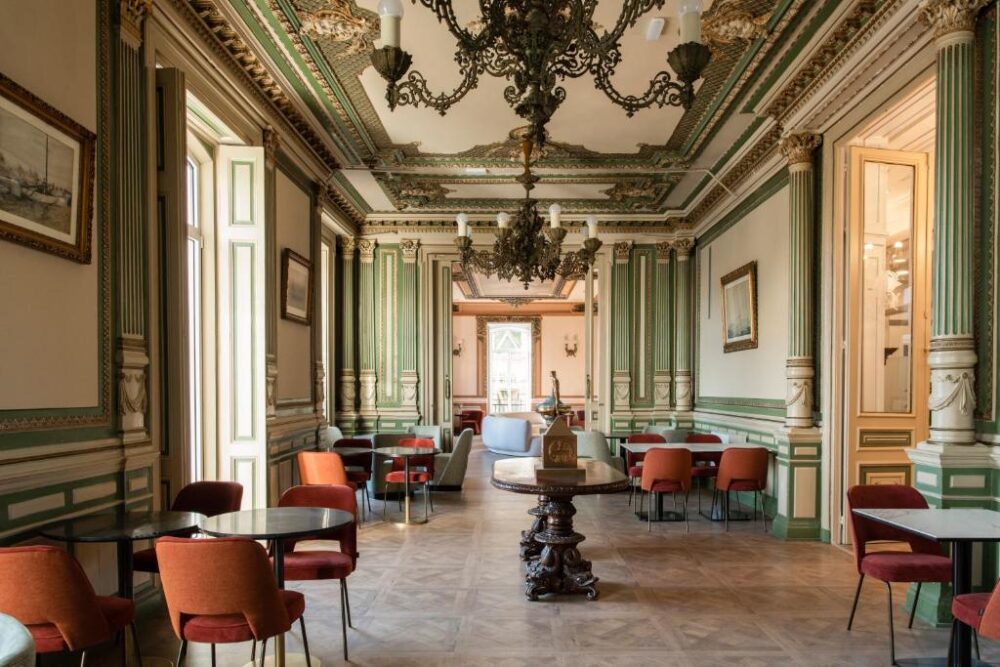
Interior of Soho Boutique Palacio de Pombo (Photo: Booking.com)
A minute from El Sardinero beach, Alda Don Carlos (Duque de Santo Mauro, 20) is a decent budget option close to the historic seafront. The location is ideal for anybody keen to spend most of their time on or near the beach. The accommodation itself consists of apartments, with even the smallest rooms featuring a dining area, fridge and microwave.
Where to Eat & Drink
Santander maintains northern Spain’s impeccable standards for renowned cuisine. Despite being a city of merely 200,000 people, five restaurants have at least one Michelin Star, while a further 19 enjoy favour in the Michelin Guide. Among the latter group, Cañadío (C. Gómez Oreña, 15) offers a taste of traditional Cantabrian cuisine done to high standards, without breaking budgets. If you don’t want a sit-down meal, you can still get excellent, pintxos, the creative tapas skewers similar in style to the pintxos of the neighbouring Basque Country, at the bar. Their cheesecake is the stuff of legend.
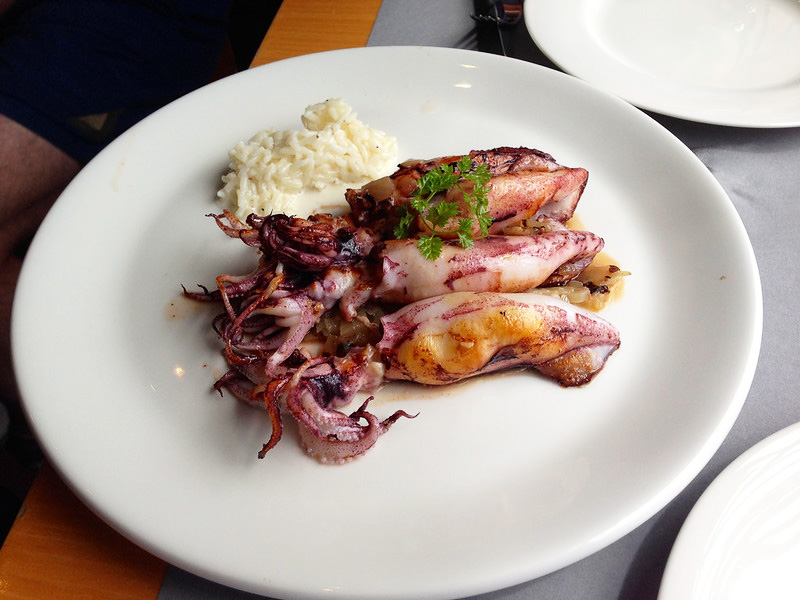
Whole calamari at Cañadío (Photo: Andrew Nash at Flickr / CC BY-SA 2.0)
At the other end of the scale is Casona del Judío (C. Repuente, 20), which is spread throughout a large, converted 19th-century mansion. Head chef Sergio Bastard not only has one of the best names in the restaurant business, but his approach to local ingredients, right down to coastal herbs and algae, have delivered a regular Michelin Star and a Green Star, which is awarded for sustainable gastronomy.
Mercado Municipal del Este (C. Hernán Cortés, 4) is Santander’s centrally located gourmet food destination. Beneath the lofty wrought iron and wood ceiling is a selection of food vendors and surprisingly upscale restaurants, such as la Casa del Indiano, where old wine barrels have been modified into tables for fans of their excellent pintxos (usually lined along the bar) and a la carte tapas. The wine list includes an impressive array of local whites, plus reds from La Rioja.
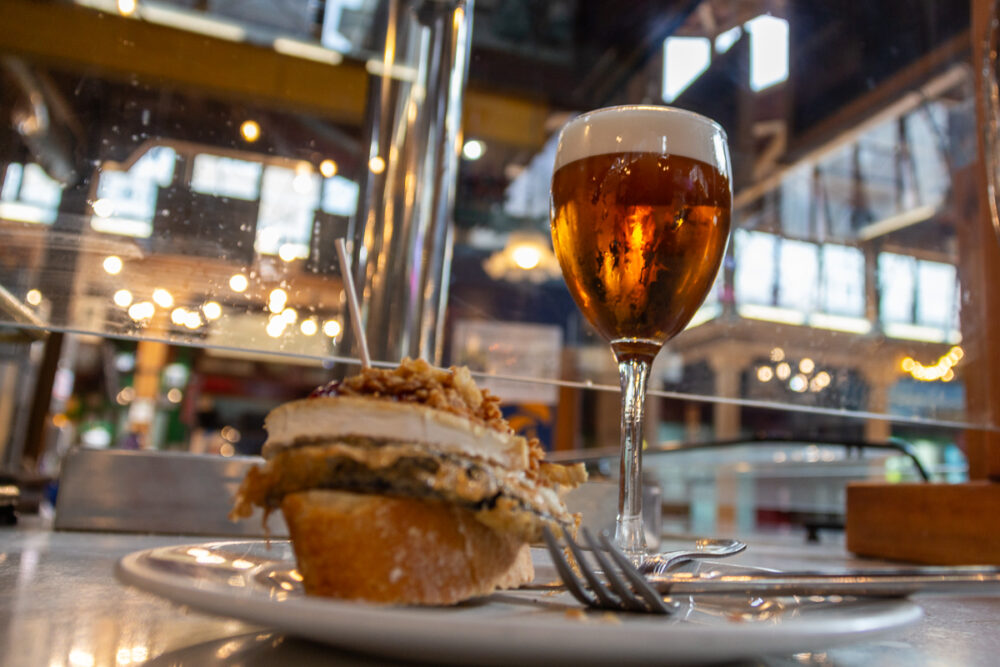
A tapa and a drink at La Casa del Indiano (Photo: Paul Stafford)
One thing grabs the attention the moment you enter Bodega La Conveniente (C. Gómez Oreña, 9): its vast assemblage of wines on the upper levels of the airy space. That’s because this bodega, practically a Santander institution, started life as a wine storage cellar at the turn of the 20th century. In 1981, the doors were opened to the public, serving plates of cheeses, croquetas and anchoas (anchovies). If you’re lucky, you might even be serenaded by the in-house pianist.